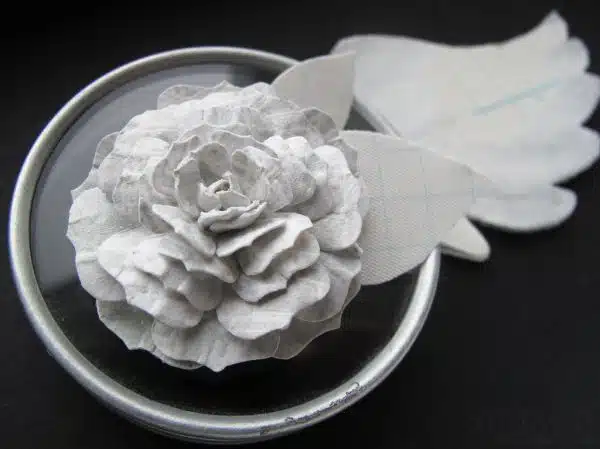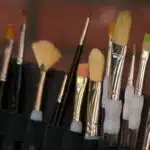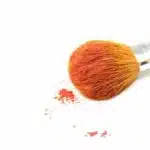When it comes to painting a room, there are certain techniques that can make all the difference in achieving a professional-looking finish. One of these techniques is known as “cutting-in.” Cutting-in involves carefully painting areas where the roller or brush cannot reach, such as the edges around windows, doors, and baseboards. While it may seem like a daunting task for inexperienced painters, with some practice and patience, anyone can learn how to cut-in paint like a pro.
As a professional painter or paint contractor, mastering cutting-in is an essential skill for delivering high-quality results that meet your client’s expectations. A poorly executed cut-in job can leave unsightly lines and ruin the overall appearance of the room. In this article, we will provide step-by-step instructions and tips on how to cut-in paint like a pro. By following our guide, you’ll be able to achieve clean and precise edges that will enhance the beauty of any painted room. Whether you’re an experienced painter or just starting out, learning how to cut-in properly will give you the confidence and skills needed to tackle any painting project with ease.
Tools And Materials You’ll Need
Painting is a craft, and like any craft, it requires the right tools. Choosing the right brush is essential to achieving a professional-looking cut-in paint job. Bristle types and sizes, as well as brush shapes, play a crucial role in determining the final outcome of your painting project.
The best brushes for cutting in are those with angled bristles that allow you to achieve precise lines and angles. A 2- or 2.5-inch sash brush is ideal for most projects, but if you’re working on a larger surface area, you may want to consider a wider brush. Synthetic bristle brushes are perfect for use with latex paints since they don’t absorb water like natural bristle brushes do.
Painting techniques such as feathering, blending, cross hatching, and edging can help you achieve seamless transitions between painted surfaces. When using these techniques, it’s important to keep your brush damp but not soaked with paint to avoid drips and smears. With the right tools and techniques at your disposal, you’ll be able to tackle any cut-in painting project like a pro! As we move on to preparing the area for painting, keep in mind that proper preparation is key to achieving a flawless finish.
Preparing The Area For Painting
To ensure a professional-looking paint job, preparation is key. Before you begin painting, take the time to prepare the area properly. One of the first decisions you’ll need to make is whether or not to use tape when cutting in your paint. While taping can help ensure cleaner lines, many professional painters prefer freehand cutting because it allows for greater control and flexibility.
If you choose to use tape, it’s important to apply it correctly. Make sure the surface is clean and dry before applying the tape. Apply the tape carefully, making sure it adheres well but doesn’t stretch or wrinkle. Once you’ve finished painting, remove the tape while the paint is still wet to prevent peeling.
Regardless of whether or not you use tape, there are several pre-painting prep tips that can help ensure a flawless finish. Clean walls thoroughly to remove any dirt or grime that could affect adhesion. Repair any cracks or holes with spackle and sand down rough spots for a smooth finish. Finally, make sure all surfaces are completely dry before painting to prevent moisture from affecting the paint’s performance.
Preparing your space properly can go a long way toward ensuring a successful paint job. In our next section, we’ll cover some tips for choosing the right type of paint and brush for your project.
Choosing The Right Paint And Brush
Choosing the right paint and brush is crucial to achieving a professional-looking cut-in. Understanding finishes is important because it affects both the appearance and durability of your paint job. For example, glossy finishes are easier to clean but can highlight imperfections in your wall, while flat finishes are more forgiving but not as durable.
When it comes to brushes, there are three main types: natural bristle, synthetic bristle, and foam. Natural bristle brushes are made from animal hair and work well with oil-based paints, while synthetic bristle brushes are better suited for water-based paints. Foam brushes are great for small touch-ups or for applying varnish or stain.
To choose the right brush for your paint job, consider the size of the area you’ll be painting as well as the type of paint you’ll be using. A 2-3 inch angled brush is ideal for cutting in along trim and edges, while a larger brush may be better suited for walls or ceilings. Additionally, keep in mind that high-quality brushes will last longer and produce a smoother finish.
Understanding the different types of finishes and brushes available can seem overwhelming at first, but taking the time to choose the right ones for your project will ultimately make your cut-in look more professional. In the next section, we’ll discuss how to properly load your brush with paint to ensure an even application.
Loading The Brush With Paint
To truly cut-in paint like a pro, it is important to know how to properly load your brush with paint. This step is crucial in achieving a smooth and even finish on your walls or ceilings. Using an appropriate amount of paint on your brush will prevent drips and splatters, saving you time and effort in the long run.
First, dip your brush into the paint about one-third of the way up the bristles. Then, gently tap the brush against the side of the can to remove any excess paint. This initial step will help you control the amount of paint on your brush, allowing for more precise strokes when cutting-in around edges and corners.
Proper brush technique is also essential when loading your brush with paint. Hold the brush at a slight angle and avoid pressing too hard or bending the bristles. Instead, use light pressure to spread the paint evenly onto your brush. With practice and patience, you’ll be able to load your brush like a pro every time.
Tips for Loading Your Brush Like a Pro:
- Use a high-quality synthetic bristle brush for best results.
- Clean your brushes thoroughly before each use to prevent leftover residue from affecting your application.
- Avoid overloading your brush with too much paint at once.
- Experiment with different types of brushes until you find one that works best for you.
- Practice makes perfect – don’t be afraid to try different techniques until you find what works best for you.
Moving forward, it’s important to remember that avoiding drips and splatters is key in achieving a professional-looking finish. With proper technique and practice, loading your brush with paint will become second nature as you perfect this crucial step in cutting-in like a pro. In order to take things further though, it’s essential that we now discuss how to wipe off excess paint before applying it onto surfaces.
Wiping Off Excess Paint
Removing excess paint is an important step in achieving a professional-looking cut-in. It helps to avoid drips and ensures that the lines are clean and sharp. To remove excess paint from your brush, lightly tap it against the edge of the paint can or a paper towel. Be sure not to wipe too hard or you may remove too much paint and create an uneven line.
Another helpful tip for removing excess paint is to use a technique called back-brushing. This involves gently brushing over the area you just painted with your brush, using light pressure to smooth out any bumps or drips that may have occurred. This will help to blend the cut-in with the rest of the wall, creating a seamless finish.
It’s also important to keep a damp cloth or paper towel on hand to quickly wipe away any excess paint that may accumulate on your brush or drip onto the wall. By keeping your work area clean and tidy, you’ll be able to achieve a more precise cut-in and avoid any potential messes. With these tips in mind, you’re now ready to move onto starting at the top of the wall for even better results.
Starting At The Top Of The Wall
After wiping off excess paint from your brush, it’s time to start cutting in. Common mistakes when cutting in include not using enough paint on the brush, not using a steady hand, and starting too close to the edge. To achieve a smooth finish, it’s important to load the brush with enough paint but not too much that it drips or runs down the wall. A good rule of thumb is to dip the bristles about one-third of the way into the paint and tap off any excess.
Starting at the top of the wall, use a steady hand to create crisp lines along the edges and corners. Using a high-quality angled brush will help you achieve precision when cutting in around obstacles such as light switches and outlets. Remember to take your time and work slowly, being careful not to rush or apply too much pressure on the brush. With practice, you’ll develop a technique that works for you and be able to cut in like a pro.
Using a steady hand for precision is essential when cutting in paint. This technique requires patience, practice, and attention to detail but once mastered can make all the difference in achieving a professional-looking finish on your walls. In the next section, we’ll discuss how to apply paint evenly without leaving streaks or bubbles behind.
Using A Steady Hand For Precision
A steady hand is crucial when it comes to precision painting. To achieve a clean and sharp cut-in, one must have the right hand position. The brush should be held close to the bristles with the handle pinched between the thumb and first two fingers while resting on the last two fingers for support. This technique allows for better control of the brush and minimizes shaking.
Maintaining focus is also key in achieving a smooth cut-in. One should concentrate on keeping a consistent pressure and angle on the brush as they move along the edge. It’s important not to rush through this process as it can lead to mistakes that can be difficult to fix later on. Take your time and work in small sections until you feel comfortable with your technique.
To summarize, achieving a professional-looking cut-in requires a steady hand and maintaining focus throughout the process. With practice, anyone can master this technique and elevate their painting skills.
- Keep your wrist relaxed
- Use short strokes
- Work from dry to wet areas
- Clean your brush frequently
- Take breaks as needed
Transition: Now that we’ve covered using a steady hand for precision, let’s move onto another important aspect of cutting-in like a pro – painting around obstacles.
Painting Around Obstacles
Using a Steady Hand for Precision, we learned how to paint with finesse. Now, let’s focus on some painting techniques that will help you avoid drips and get clean lines while cutting in with textured walls.
First, it’s important to load the brush properly. Dip the brush into the paint about halfway up the bristles, then tap gently against the side of the can to remove any excess. This will prevent drips from forming on your walls. When cutting in around obstacles like light fixtures or switch plates, start a few inches away and work your way toward the obstacle using short strokes. This will ensure that you have enough control over the brush and won’t accidentally hit anything.
Cutting in with textured walls can be challenging, but there are a few tricks that can make it easier. Start by using a thinner brush so you have more control over your strokes. Work slowly and steadily, blending each stroke into the next to create a seamless finish. If you’re having trouble getting crisp lines, try using painter’s tape to mask off areas that you don’t want to paint.
In summary, avoiding drips is key when cutting in around obstacles and textured walls require patience and precision. By following these tips and techniques, you’ll be able to achieve professional-looking results without breaking a sweat. In our next section, we’ll tackle another tricky area: dealing with corners and edges.
Dealing With Corners And Edges
Ah, corners and edges. The bane of every painter’s existence. These tricky areas require a steady hand and a sharp eye to get right. But fear not, my friends! With a few simple techniques and some practice, you’ll be cutting in around windows and achieving seamless corners like a pro.
First up, let’s talk about cutting in around windows. This can be a bit tricky, but it’s all about taking your time and being patient. Start by loading up your brush with paint and make sure to wipe off any excess on the side of the can. Then, using the tip of your brush, carefully outline the window frame, making sure to stay just outside the line so that you have room to go back and fill in later. Once you’ve gone around the entire frame, start filling in the space between the lines with smooth strokes until everything looks even.
Now onto those pesky corners. The key here is to use an angled brush to get into tight spaces and make sure you’re painting in one direction only (either horizontal or vertical). Start by painting along one edge of the corner with light pressure, then switch to heavier pressure as you move towards the other side. Make sure to feather out any areas where there might be too much paint buildup so that everything looks seamless.
With these techniques in mind, you’ll be well on your way to achieving beautiful corners and edges in no time. Just remember to take your time and check your work as you go – we’ll talk more about that next!
Checking Your Work As You Go
Quality control is an essential part of professional painting, and spot-checking progress is an invaluable tool in ensuring that the job is done correctly. Regularly double-checking the lines and edges of the paint job is necessary to ensure that the edges are crisp and the finish is smooth. Additionally, using the right tools to measure angles and depth of cut-in is essential to ensure a professional-looking job. Finally, it is important to take the time to check the full perimeter of the job to make sure that the paint is even and consistent throughout.
Quality Control
To achieve professional-looking paint cut-ins, quality control is a critical aspect that should not be overlooked. The importance of consistency cannot be overemphasized in this regard. It is essential to maintain the same level of precision and attention to detail throughout the entire project for a seamless finish.
Monitoring progress is another crucial aspect of quality control when cutting-in paint. While it may seem tedious, regularly stepping back to assess the work done so far can help identify any errors or inconsistencies before they become too difficult to correct. This practice also helps ensure that each section looks uniform and meets the desired standard.
In conclusion, achieving perfect cut-ins requires unwavering attention to detail, consistency, and monitoring progress at every stage of the painting project. As a professional painter or paint contractor, taking these steps will help you deliver an exceptional result that exceeds your customer’s expectations. Always remember that quality control is necessary for building trust with clients and delivering high-quality services.
Spot-Checking Progress
To ensure the highest possible quality of work, painting professionals must check their progress as they go. Spot-checking is an essential aspect of ensuring that the project remains on track and meets the desired results. One common mistake to avoid when spot-checking is failing to account for lighting conditions, which can significantly impact the appearance of finished work.
Proper lighting is crucial for effective spot-checking. This means ensuring that the workspace is well-lit throughout every stage of the project. Poor lighting can make it difficult to identify areas that need touch-ups or corrections, resulting in a subpar finished product. Similarly, overly bright or dim light sources can create shadows or highlights that may mislead even experienced painters.
Another common error when spot-checking progress is becoming too focused on one section while neglecting others. It’s important to maintain a balanced approach and regularly step back to assess each section’s overall appearance in relation to others. With this in mind, painting professionals should always strive for consistency in their work to produce a cohesive final result that meets their clients’ expectations.
Touching Up Mistakes
When it comes to painting, mistakes can happen. Even the most experienced painters will tell you that cut-in lines are one of the trickiest parts of the job. If you find yourself in a situation where your cut-in line is not as sharp as you’d like it to be, there are techniques for blending that can help.
One common mistake when cutting in is using too much paint on your brush. This can lead to drips and an uneven line. To avoid this, use only a small amount of paint on your brush and work slowly and carefully along the edge of the surface you’re cutting in. You can always add more paint if necessary.
Another mistake is not paying attention to the direction of your brush strokes. If you’re cutting in along a ceiling or wall, make sure your strokes are going towards the edge you’re cutting in. This will help ensure an even line and prevent any drips from forming.
Techniques for blending can also be helpful when touching up mistakes in your cut-in lines. One method is to lightly feather out any areas where the paint may have overlapped or gone beyond its intended area. Another technique is to use a small amount of water on a clean brush to blend out any harsh lines.
- Use painter’s tape to create a straight edge for your cut-in line.
- Before painting, make sure surfaces are clean and dry.
- Don’t rush! Take your time when cutting in to ensure a neat finish.
- Keep a damp cloth nearby to quickly wipe away any mistakes before they dry.
With these tips, you’ll be able to touch up any mistakes in your cut-in lines like a pro. But what about painting baseboards and trim? Let’s take a look at some best practices for achieving clean edges and smooth finishes.
Painting Baseboards And Trim
When it comes to painting baseboards and trim, there are certain techniques that can help achieve a professional-looking finish. Before starting the project, it is important to choose the right paint color and finishing technique to ensure the best results.
Choosing paint colors for baseboards and trim can be tricky as these areas often have different lighting conditions than walls. It is recommended to test several shades in the room to see how they look in different lighting situations. Matte or satin finishes are commonly used for baseboards and trim as they hide imperfections well and are easy to clean.
Finishing techniques such as adding texture or using stencils can add an extra touch of elegance to baseboards and trim. However, it’s important not to overdo it and keep the overall design cohesive with the rest of the room. A simple yet effective finishing technique is applying a second coat of paint in a different direction than the first coat for a smooth and even finish.
Next, blending the cut-in with the rest of the wall is crucial for achieving a seamless look. This involves using a small brush or roller to blend any lines created during the cutting-in process with the rest of the wall. By taking your time with this step, you can ensure that your baseboards and trim look like they were painted by a pro.
Blending The Cut-In With The Rest Of The Wall
Once you have painted the baseboards and trim, it’s time to move on to the cut-in technique. The cut-in is the process of painting a straight line along the edge where two colors meet, such as where a wall meets a ceiling or baseboard. To achieve a professional-looking finish, it’s essential to learn how to blend the cut-in with the rest of the wall.
Blending technique is crucial in creating a seamless transition between paint colors. To achieve this, start by using a small brush to paint along the edge of your cutting area. Once you’ve painted your cutting line, use a dry brush and gently blend away any excess paint. This will help create a gradual transition from one color to another.
Color matching is also an essential aspect of blending techniques. It’s important to ensure that your new paint matches existing colors on your walls or trim. Before beginning any new painting project, take time to match your new paint with existing colors by holding up swatches against your walls or trim.
- Use painter’s tape to mask off areas that you don’t want to be painted.
- Paint slowly and carefully along edges.
- Use long strokes when painting larger areas.
- Allow sufficient drying time before applying additional coats.
- Clean brushes and tools thoroughly after use.
Now that you’ve mastered the art of blending and color matching, it’s time to clean up your tools. Cleaning up your tools properly will help extend their lifespan and prevent damage from occurring during storage. Simply rinse brushes under warm water until all paint has been removed, then hang them upside down until they’re completely dry. For rollers, roll off excess paint onto newspaper before rinsing with warm water and detergent. Store brushes and rollers in their original packaging or wrap them in plastic wrap for safekeeping until your next project comes around.
Cleaning Up Your Tools
- Properly cleaning paint brushes and rollers is an essential step in ensuring a professional finish to any painting job.
- Brushes should be cleaned using a mild detergent and warm water, to ensure all paint particles are removed and the bristles stay in good condition.
- Rollers should be cleaned with a solvent such as mineral spirits, to ensure all the paint is removed and the roller is reusable.
- It is important to allow the brush and roller to dry completely, before storing them away for future use.
Cleaning Brushes
As a professional painter or paint contractor, there’s nothing more frustrating than having to deal with dirty brushes. Cleaning brush techniques are crucial in ensuring that your tools remain in good condition and can be used for future jobs. Proper cleaning also prevents the mixing of colors and ensures a smooth finish on your work.
One effective cleaning technique is to rinse the brush thoroughly under running water. This helps to remove any excess paint before proceeding with the actual cleaning process. Next, use warm soapy water to clean the bristles, making sure to work the soap into the fibers of the brush. Once you have cleaned the brush, rinse it again under running water until all traces of soap are gone.
Storage solutions for paint brushes are equally important as cleaning them. Once you have cleaned your brushes, make sure to store them properly, ideally in their original packaging or a dedicated brush container. Avoid storing brushes in damp areas as this can cause mold growth on your tools. With proper storage and maintenance, your brushes will remain in excellent condition and ready for use when you need them.
In conclusion, taking care of your painting tools is crucial not only for their longevity but also for producing high-quality work. Effective cleaning brush techniques coupled with proper storage solutions should be an essential part of any painter’s routine. By following these simple steps, you can ensure that your brushes remain in top condition and ready whenever you need them.
Cleaning Rollers
As a professional painter or paint contractor, keeping your tools clean is crucial in producing high-quality work. In addition to cleaning brushes, it’s also important to give attention to cleaning rollers. Rollers are commonly used in painting large surfaces such as walls and ceilings. Over time, they can accumulate paint buildup that could affect the outcome of your next project.
Using the right solvent is crucial in choosing the best cleaning method for your rollers. Latex paint, for instance, requires warm soapy water while oil-based paints may need mineral spirits or turpentine. Start by removing any excess paint from the roller using a scraper or putty knife. Then, submerge the roller into the appropriate solvent and let it soak for a few minutes before scrubbing it with a brush gently.
Once you have removed all traces of paint and cleaned off any remaining solvent, rinse the roller under running water until there are no more suds. Dry it off using a clean towel or hang it up to air dry completely before storing it away. By regularly taking care of your rollers through proper cleaning techniques and storage solutions, you can ensure that they remain in excellent condition and ready for your next painting project.
Practice Makes Perfect
As a professional painter or paint contractor, cutting-in paint is an essential skill that you must master. While it may seem like a daunting task for beginners, with practice and patience, anyone can perfect the technique. The key to mastering this skill lies in the importance of repetition.
Repetition is crucial when it comes to cutting-in paint because it allows you to improve your technique gradually. The more you practice, the better your muscle memory becomes, making it easier for you to handle the brush with precision. One tip for improving your technique is to start small and work your way up gradually. Begin by practicing on small areas and then move on to larger ones as you become more confident.
Another tip for improving your technique is to use high-quality tools. A good quality brush will hold its shape better, allowing you to create sharp lines and edges effortlessly. Additionally, investing in a steady hand will help you maintain control while cutting-in around corners and edges.
In summary, cutting-in paint like a pro requires patience, practice, and attention to detail. By incorporating these tips into your routine and focusing on repetition, you can master this important skill in no time. Remember that painting is an art form that requires dedication and commitment; so keep at it until you achieve perfection!
Conclusion
Cutting-in paint like a pro requires the right tools, preparation, and technique. Before starting, gather the necessary tools and materials, such as painter’s tape, a paintbrush, and the appropriate type of paint. Prepare the area by cleaning it thoroughly and applying painter’s tape to avoid getting paint on surfaces that shouldn’t be painted. Choose the right brush for the job and load it with paint correctly. Wipe off excess paint before beginning to cut-in around baseboards and trim. Blend the cut-in with the rest of the wall by feathering out any hard edges.
Cleaning up your tools properly will ensure their longevity and effectiveness next time you use them. Remember that practice makes perfect when it comes to cutting-in paint like a pro. Keep practicing your technique until you achieve clean, precise lines that blend seamlessly with the rest of your wall.
So why not take your painting skills to the next level? With these tips for cutting-in like a pro, you can transform any room in your home with ease. Whether you’re a professional painter or just starting out, mastering this technique is sure to impress your clients or guests alike. So what are you waiting for? Grab your brushes and start practicing today!
Image Credits
- “hand cut paper rose emboss resist with paint” by melstampz (featured)





























